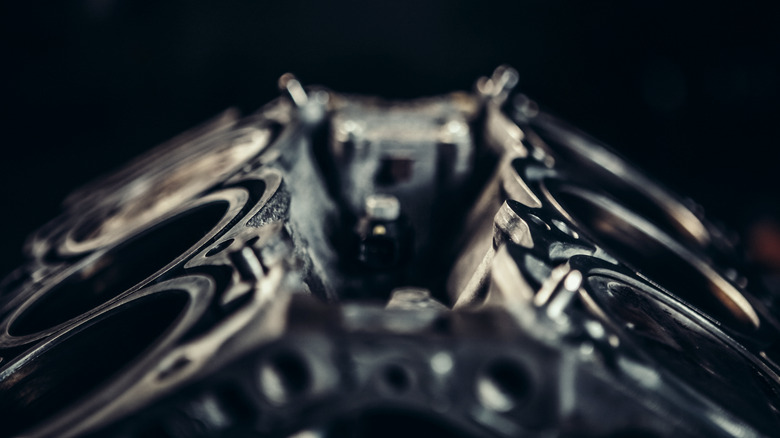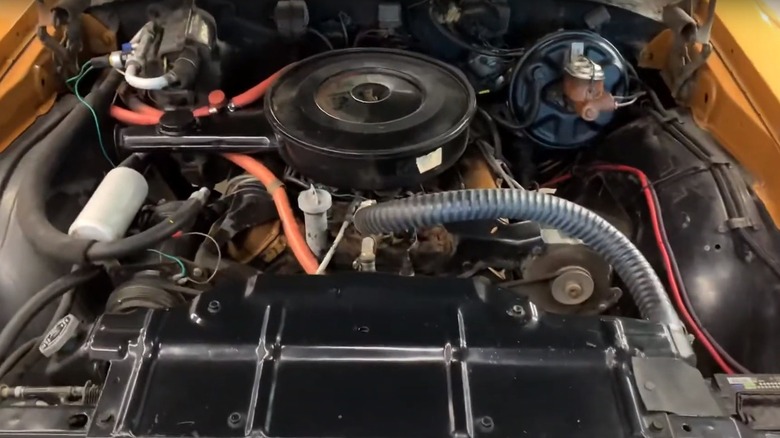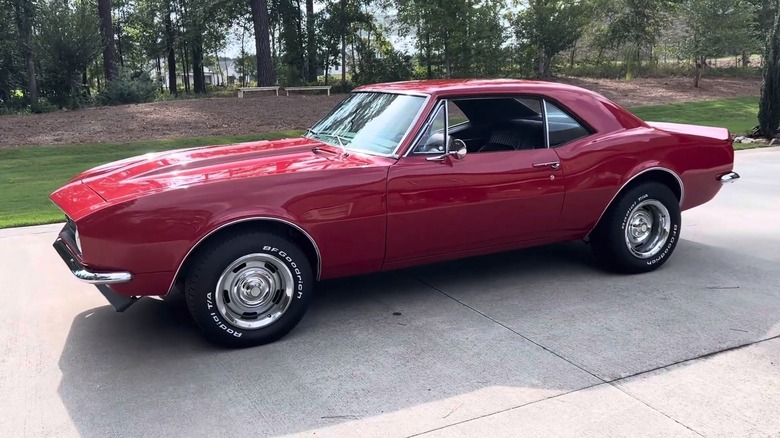Oldsmobile 350 Vs Chevrolet 350: What's The Difference?
The late '60s were an exciting time for the automotive industry and fans of powerful cars. The archetypal "muscle car" was born in that era: traditionally American, accessibly priced, with a robust engine, formidable top speed, and impressive acceleration compared to other vehicles of the time. Two engines from General Motors brands captured enthusiasts' attention: the Oldsmobile 350 and the Chevrolet 350. What made these engines unique, and how did they compare with one another?
Each GM brand made its own V8 until the mid-to-late '70s when an automotive scandal revealed the automaker was swapping engines. Many '70s owners of The Oldsmobile Delta 88 discovered their Rocket 350 engines were subtly swapped with Chevrolet 350s and headed to court. According to The New York Times, the plaintiffs numbered 50,000 and asked for a $131 million award from GM. Following these public complaints, GM learned their lack of disclosure when switching brand-specific parts wasn't acceptable to car buyers.
The Chevrolet 350 and Oldsmobile Rocket 350 — named for their 350 cubic-inch displacement — both powered legendary muscle cars. The Oldsmobile model drove the 1969 Cutlass S Sports Coupe, which could reach 0-60 in under 7 seconds. The Chevrolet 350 made its debut in the iconic 1967 Camaro, which offered drivers a similar 0-60 time as the Oldsmobile.
What made the Oldsmobile 350 special?
Oldsmobile's high-performance version of the small block V8 was the Rocket 350. It was designed with a 4.057-inch bore (cylinder diameter) and a 3.385-inch stroke (piston travel distance), which allowed for enhanced power generation. The larger the cylinder and the less the piston needs to travel, the better the performance. The Oldsmobile plant proved that axiom with 325 brake horsepower. Not only could this engine provide some thrills behind the wheel, but it was also highly regarded as unique to Oldsmobile and dependable throughout its lifespan.
The Rocket variation also included more robust components seen on larger 400-cubic-inch blocks. With parts incorporated from larger engines and specialty components fitted specifically for the Rocket, this small block V8 offered a 10.5:1 compression ratio. The high compression produced by the Rocket 350 enabled more power during combustion for enhanced performance. The Oldsmobile Cutlass is often overlooked among comparable cars like the Mustang and Camaro, but it was a beast in its own right, one of several underrated muscle cars worth a second look.
Chevrolet's 350 was also unique
Chevy's 350 engine offered enough oomph to be included in the 1967 Camaro and stuck around long enough to power Corvettes in the '80s. With a 4.00-inch bore and 3.48-inch stroke, it wasn't as potent as Oldsmobile's Rocket 350, but it still provided solid performance. Chevy's iconic 350 plant could generate 295 horsepower in the '67 Camaro, aided by the car's smaller overall size compared to a 1969 Cutlass.
One of the advantages of Chevy's 350 is the availability of replacement parts. Some of those specially crafted Rocket 350 components are challenging to find nowadays. The Chevrolet 350, on the other hand, is more easily modified and is compatible with numerous aftermarket parts for performance-enhancing alterations. In addition to the fondly remembered Cutlass and Camaro, there are several other classic American muscle cars worth every penny if you are looking to own a piece of automotive history.


